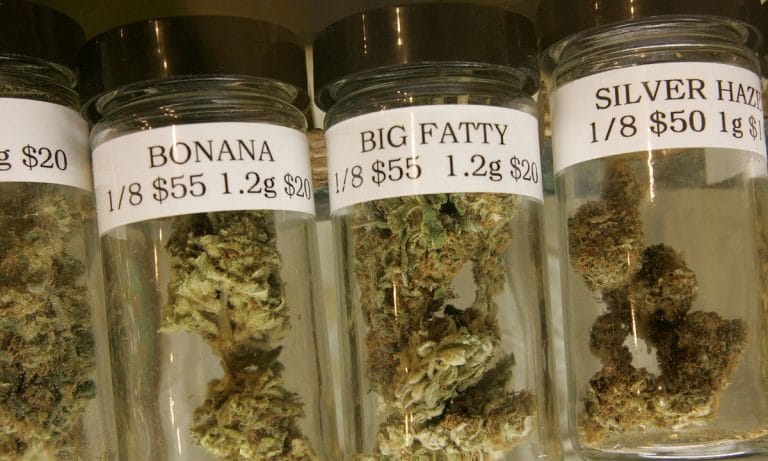You should know before proceeding onward that this post is dark and full of spoilers regarding the outcomes of Games of Thrones recent episode “Beyond the Wall.” This is the one that Jon Snow and his Suicide Squad travel across the wall with their really, really stupid plan to capture a wight, believing this will convince Cersei Lannister the White Walkers are real. Guess what? Things don’t turn out so hot.
Spoilers start now.
Okay, so ice dragons. One loose thread following the outcomes of “The Spoils of War,” a.k.a. the one where Jaime Lannister almost got got by Drogon, involved the escalating power of dragons in a war of humans. The action seen through the aghast eyes of Jaime, we recognize the losing proposition of fighting dragons. In outside conversations following that episode, “weapons of mass destruction” became a shorthand to describe the capacity of nuclear destruction of which these beasts were capable.
And as Jaime relayed to Cersei in “Eastwatch,” Daenerys enacted that annihilation with just one dragon—imagine what battling three would be like?
This logic presented a narrative conundrum for showrunners Benioff and Weiss: Once witnessing the dragons as reality instead of fantasy, the audience would expect every upcoming possible battle to be a blowout victory. Cersei and crew would be every NBA team marching toward the train of inevitability that was Golden State last season, which, if you remember, is why basketball was kind of boring last year. (Yes, Cersei Lannister is Russell Westbrook in this scenario—both First-Team ballot inductees of Kobe Bryant’s Always Shoot Your Shot All-Stars.)
So when Daenerys rode in with all three dragons to save Jon’s Suicide Squad, you kind of suspected it wasn’t ending well for one dragon. (Quick side note: Yes, everyone previously joked that travel time no longer existed in Game of Thrones, but Dany swooping in Dragon Ex Machina style thanks to a Crow E-Mail Alert was particularly egregious.) With the Night King javelin-throwing Viserion with a 99 Accuracy Rating, he humbled Westeros’ biggest power player, Dany, who now grasps the White Walker threat. And by raising Viserion from the dead, he claimed the dragon WMD as an asset of his own.
Wight Dragon or Zombie Dragon might represent a more accurate moniker for the resurrected Viserion, but Ice Dragon sounds cooler. And guess what? Ice dragons are also a thing in the Game of Thrones universe because George R.R. Martin really thought of everything. Here’s what we already know about ice dragons:
Ice Dragon Mythology
In Martin’s A Song of Ice and Fire series, ice dragons were either real or fantasy lore. Jon Snow recalls Old Nan regaling him ice dragons tales in A Dance With Dragons and in Season 1 of the show. The encyclopedic tome The World of Ice and Fire describes ice dragons as such:
Of all the queer and fabulous denizens of the Shivering Sea, however, the greatest are the ice dragons. These colossal beasts, many times larger than the dragons of Valyria, are said to be made of living ice, with eyes of pale blue crystal and vast translucent wings through which the moon and stars can be glimpsed as they wheel across the sky. Whereas common dragons (if any dragon can truly be said to be common) breathe flame, ice dragons supposedly breathe cold, a chill so terrible that it can freeze a man solid in half a heartbeat.
Sailors from half a hundred nations have glimpsed these great beasts over the centuries, so mayhaps there is some truth behind the tales. Archmaester Margate has suggested that many legends of the north — freezing mists, ice ships, Cannibal Bay, and the like — can be explained as distorted reports of ice-dragon activity. Though an amusing notion, and not without a certain elegance, this remains the purest conjecture. As ice dragons supposedly melt when slain, no actual proof of their existence has ever been found.
GRRM Wrote A Novella Called The Ice Dragon
Though Martin is most known for A Song of Ice and Fire, he published other work. Included in his bibliography is a 1980 children’s novella called The Ice Dragon. While it includes similar themes to what would become ASOIAF, Martin claimed multiple times it does not take place in the same universe.
https://twitter.com/Orions_BeIt/status/871938617836482564
Ice Dragon Fan Theories
You could lose days and nights reading ASOIAF theories on Reddit. Trust me, I’ve done it.
But two prevailing theories circulating once again following Viserion’s turn to the Ice Side revolve around hidden ice dragons. One serves as explanation to the hot springs that warm Winterfell, positing that a lurking ice dragon is the source. Here’s what Martin wrote in The World of Ice and Fire:
Yet the smallfolk of Winterfell and the winter town have been known to claim that the springs are heated by the breath of a dragon that sleeps beneath the castle.
Another theory believes that the fabled Wall hides a frozen dragon. Either that or a dragon rests at the base of the Wall or is the Wall itself is a dragon. Neither is likely true but this could be the inspiration of Game of Thrones solidifying the existence of ice dragons.













